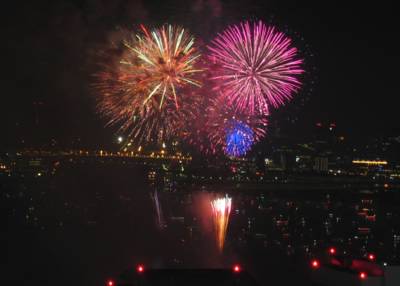
Fuji-san
The moon fades behind
Fuji-san so still and quiet
I freeze for a time
A Haiku poem. (Megan: I bet you didn't think I wrote poetry). This is a picture I took of Mt. Fuji in early evening with the moon disappearing behind it. Haiku is traditional Japanese poetry with a number of forms but is usually short. I chose 17 syllables, in 3 lines, arranged 5-7-5 which is a common form. It oftens includes nature and an emotion. Usually there is a clever turn in it. Do an internet search and you can find out more.






